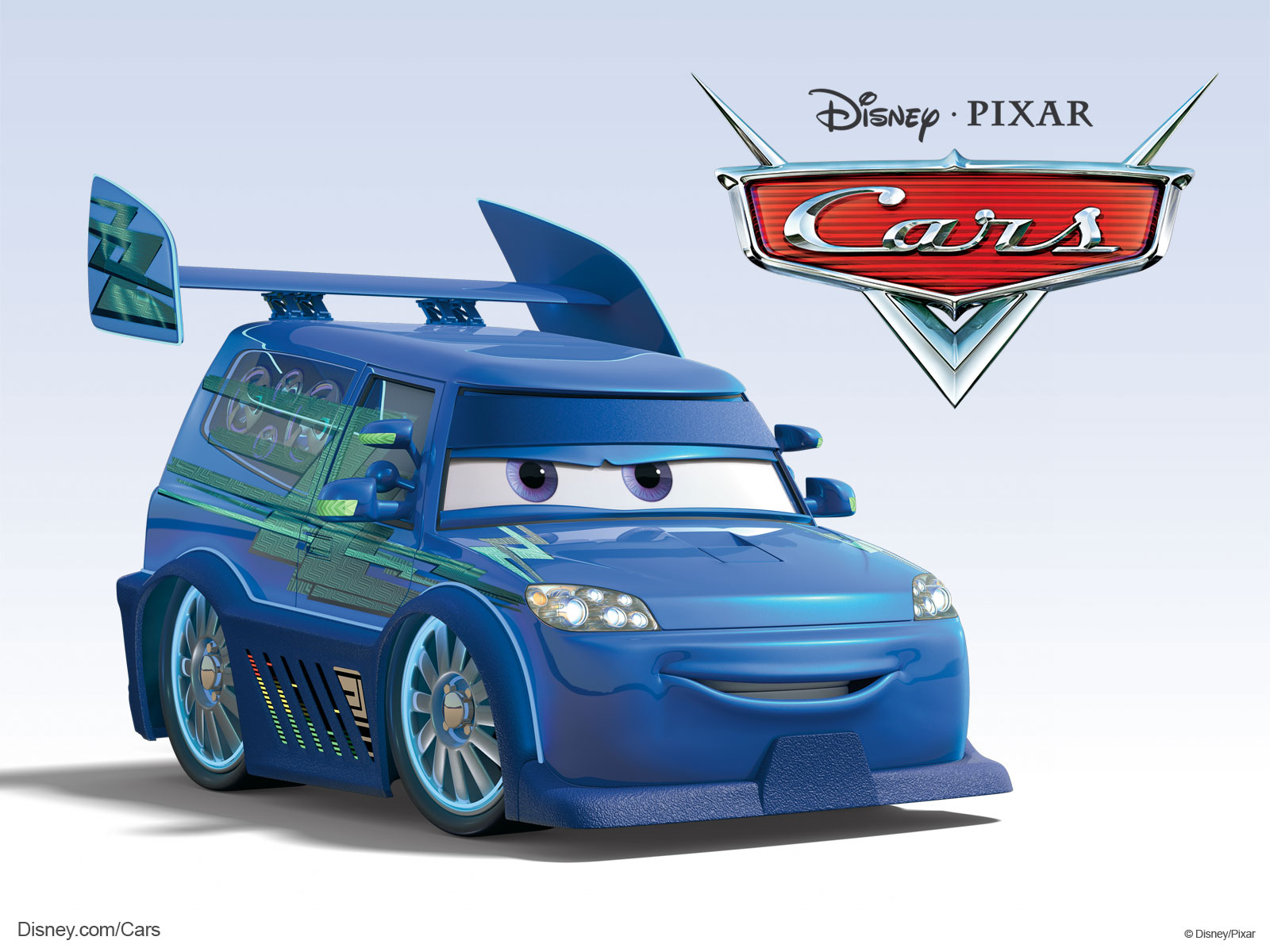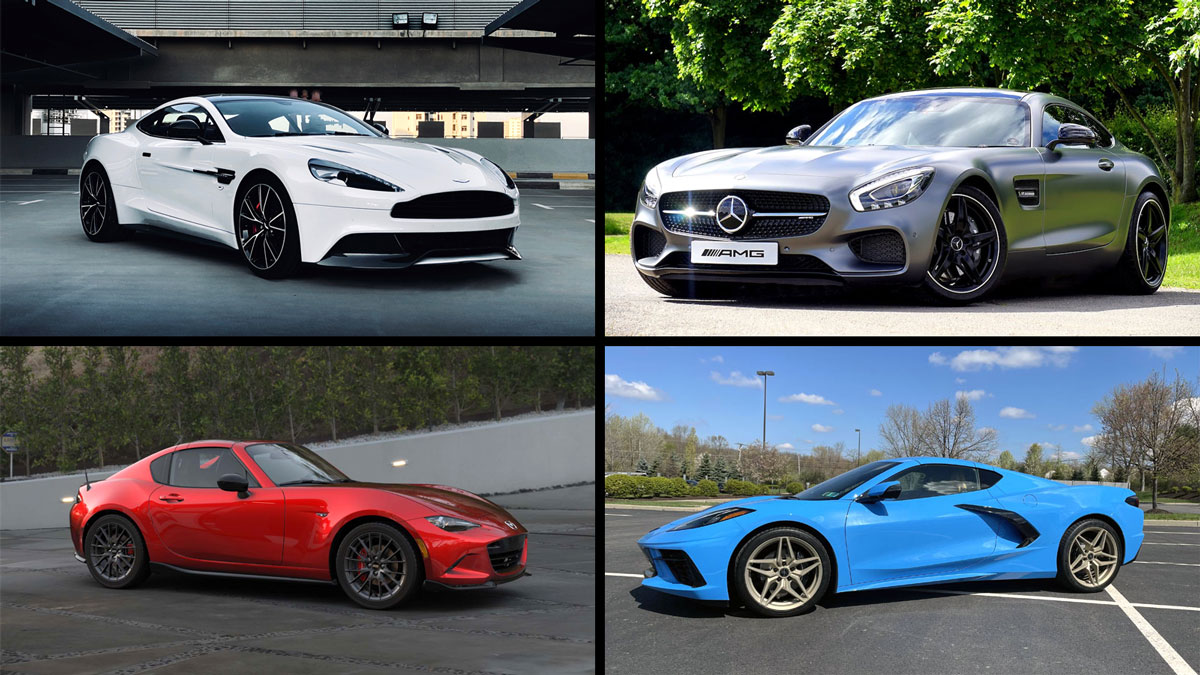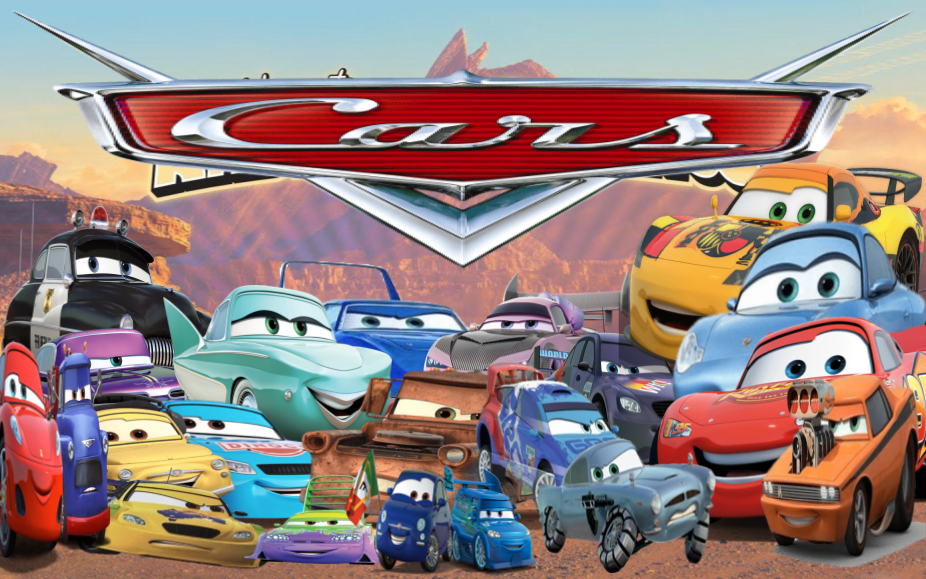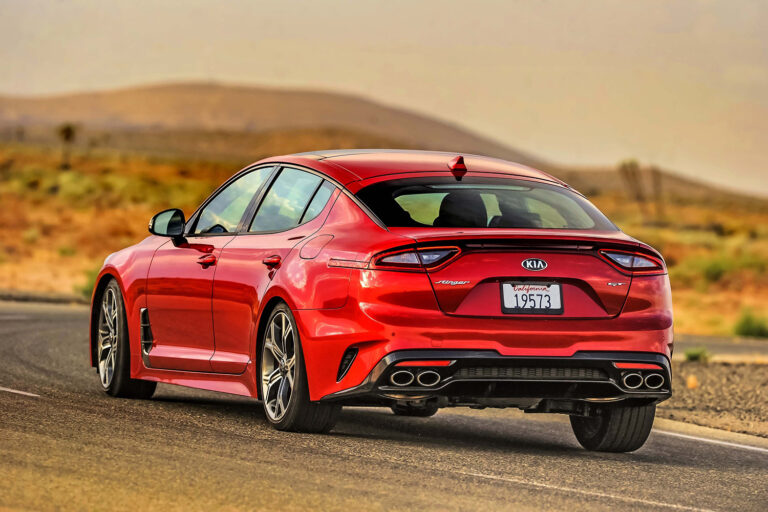What Cars Have Cummins Engines: Unearthing the Powerhouse in Your Driveway
What Cars Have Cummins Engines: Unearthing the Powerhouse in Your Driveway cars.truckstrend.com
When the average person thinks of a "car," images of sedans, hatchbacks, or SUVs typically come to mind. However, when the conversation shifts to the legendary power and unwavering reliability of Cummins engines, the landscape changes dramatically. While you won’t find a Cummins diesel purring under the hood of a Honda Civic or a Toyota Camry, these industrial-grade powerplants have carved out an indelible niche in a specific segment of the automotive world: light-duty pickup trucks, heavy-duty commercial vehicles, and increasingly, specialized SUVs.
This article will delve deep into the question of "What cars have Cummins engines," clarifying the often-misunderstood relationship between this iconic engine manufacturer and the vehicles that utilize its formidable power. We’ll explore the history, the key models, the benefits, and the considerations for anyone looking to harness the legendary "Cummins torque" in their daily drive or demanding work.
What Cars Have Cummins Engines: Unearthing the Powerhouse in Your Driveway
The Cummins Legacy: A Name Synonymous with Durability
Cummins Inc. is an American multinational corporation that designs, manufactures, and distributes engines, filtration, and power generation products. For over a century, Cummins has been a global leader in diesel technology, building a reputation for engines that are not only powerful but also incredibly durable, fuel-efficient, and long-lasting. While their engines power everything from massive mining trucks and marine vessels to industrial generators, their foray into the consumer vehicle market, specifically light-duty trucks, is what has cemented their household name status among enthusiasts and professionals alike.
The primary reason a "car" (in the broader sense of a personal vehicle) would feature a Cummins engine is for its unparalleled torque output, towing capability, and longevity. These engines are built to work hard, making them ideal for tasks that push standard gasoline engines to their limits, such as hauling heavy trailers, navigating challenging terrain, or simply enduring hundreds of thousands of miles of service.
The Flagship Partnership: Cummins and Ram Trucks
Undoubtedly, the most prominent and widely recognized application of Cummins engines in a consumer-oriented vehicle is within the Ram Heavy Duty pickup truck line. This partnership, which began in 1989, revolutionized the truck market and established the Ram (then Dodge Ram) as a formidable contender against Ford and Chevrolet.
-
The Early Days (1989-2007): The 5.9L Cummins Inline-Six

The first Cummins engine to grace a Dodge Ram was the 5.9-liter B Series inline-six diesel. This engine quickly became legendary for its robust design, mechanical simplicity, and incredible durability. It offered significantly more torque and better fuel economy than the gasoline V8s available at the time, making Ram trucks the go-to choice for serious towing and hauling. Over its lifespan, the 5.9L evolved, gaining electronic controls and common-rail fuel injection, but its core inline-six architecture remained a hallmark of reliability and power. -
The Modern Era (2007-Present): The 6.7L Cummins Inline-Six
In 2007, the 5.9L was replaced by the larger, more powerful 6.7-liter Cummins inline-six. This engine was designed to meet stricter emissions standards while simultaneously increasing power and torque outputs. The 6.7L Cummins, available in various power levels depending on the Ram 2500, 3500, 4500, and 5500 models, is the heart of today’s Ram Heavy Duty trucks.
- Key Features: Variable geometry turbocharger, common-rail fuel injection, exhaust gas recirculation (EGR), diesel particulate filter (DPF), and selective catalytic reduction (SCR) with Diesel Exhaust Fluid (DEF).
- Benefits: Unmatched towing capacity (upwards of 37,000 lbs in some configurations), impressive longevity (often exceeding 500,000 miles with proper maintenance), strong resale value, and a massive aftermarket support network for performance upgrades and maintenance.
- Practical Advice: If considering a Ram with a 6.7L Cummins, be aware of the maintenance requirements for emissions systems (DEF refills, DPF regeneration). While adding complexity, these systems are crucial for modern diesel operation. Regular oil changes, fuel filter replacements, and air filter checks are paramount to its longevity.

Beyond Ram: Other Factory Applications
While Ram is the primary flag-bearer for Cummins in the light-duty segment, there have been other factory applications, albeit less common or in different market segments.
-
Nissan Titan XD (2016-2019): The 5.0L V8 Cummins
For a brief period, Nissan offered the Titan XD pickup truck with a 5.0-liter V8 Cummins turbo-diesel engine. This engine was designed specifically for the light-duty truck market, aiming to bridge the gap between half-ton and heavy-duty trucks. While innovative, it did not achieve the market success of the Ram Cummins and was discontinued after the 2019 model year.- Key Features: Compact V8 design, two-stage turbocharger, common-rail fuel injection.
- Benefits: Offered a diesel option in a segment where it was rare, good towing capacity for its class.
- Considerations: Due to its limited production run, parts availability might be less extensive than for the 6.7L, and specialized knowledge might be required for repairs.
-
International Markets / Specialized Vehicles:
Cummins engines also power various commercial vans (e.g., some models of Ram ProMaster with smaller Cummins diesels in specific markets), medium-duty trucks (e.g., Freightliner, International), and even some off-road vehicles or specialized SUVs in international markets or custom applications. For example, in China, Foton Motor Company has partnered with Cummins to produce light-duty trucks and SUVs with Cummins engines. However, these are generally not available as "cars" in the traditional North American consumer market.
The World of Cummins Swaps: When a "Car" Gets a Diesel Heart Transplant
While not factory-installed, the immense popularity and robust nature of Cummins engines have led to a thriving aftermarket for "engine swaps." Enthusiasts often transplant Cummins diesels into a wide variety of vehicles, effectively turning them into "Cummins cars."
-
Popular Candidates:
- Jeep Wranglers/Gladiators: A common swap for off-roaders seeking more torque for rock crawling or overland expeditions.
- Older Ford/Chevy Pickups: Many prefer the Cummins reliability over factory diesel options or as an upgrade from gasoline engines.
- Classic Cars/Hot Rods: Some builders integrate Cummins engines into unlikely vehicles for a unique, torque-heavy build.
- Heavy-Duty SUVs: Vehicles like the Ford Excursion or older Suburban models are sometimes converted for extreme towing needs or as expedition vehicles.
-
Challenges and Considerations for Swaps:
- Complexity: Swaps are not for the faint of heart. They require extensive mechanical knowledge, custom fabrication (engine mounts, transmission adapters), wiring integration, and fuel system modifications.
- Cost: Beyond the engine itself, costs for adapters, intercoolers, radiators, exhaust systems, and labor can quickly add up.
- Legality/Emissions: Emissions regulations vary by state/region. Swapped vehicles may face challenges with registration or inspections, especially with older, non-emissions-compliant engines.
- Weight Distribution: Diesel engines are heavy, which can alter a vehicle’s handling, suspension requirements, and braking performance.
Benefits of Owning a Cummins-Powered Vehicle
For those who need the capability, the benefits of a Cummins engine are compelling:
- Unrivaled Torque and Towing Power: This is the primary draw. Cummins engines deliver immense low-end torque, making light work of heavy loads.
- Exceptional Durability and Longevity: Known for their robust construction, Cummins engines are designed to last for hundreds of thousands of miles, often exceeding 500,000 miles with proper maintenance.
- Fuel Efficiency (for their class): While not sips of fuel, diesel engines generally offer better fuel economy than comparable gasoline engines in heavy-duty applications, especially when under load.
- Strong Resale Value: Vehicles with Cummins engines tend to hold their value exceptionally well due to their reputation for reliability and demand.
- Extensive Aftermarket Support: A vast network of parts, performance upgrades, and specialized mechanics supports Cummins engines.
Important Considerations
While powerful, owning a Cummins-powered vehicle comes with specific considerations:
- Initial Cost: Diesel trucks typically have a higher purchase price than their gasoline counterparts.
- Fuel Cost: Diesel fuel is often more expensive than gasoline, though mileage can offset this for high-mileage drivers or those who tow frequently.
- Maintenance: While durable, maintenance can be more involved and potentially more expensive (larger oil capacities, specialized filters, DEF refills for newer models).
- Noise and Vibration: Diesels are generally louder and can produce more vibration than gasoline engines, though modern diesels have significantly reduced this.
- Cold Weather Operation: Diesel fuel can gel in extreme cold, requiring block heaters or anti-gel additives.
Price Table: Key Vehicles Featuring Cummins Engines and Their Market Context
It’s important to clarify that "cars" with factory-installed Cummins engines are almost exclusively heavy-duty pickup trucks. The prices below reflect the typical market range for these vehicles (new and used, where applicable) rather than just the engine itself, as the engine is an integral part of the vehicle’s value proposition.
| Vehicle Model | Cummins Engine Model | Engine Displacement/Type | Key Features/Application | Typical Market Price Range (New/Used) |
|---|---|---|---|---|
| Ram 2500/3500 HD | 6.7L Cummins | 6.7L Inline-6 Turbo-Diesel | Heavy-duty towing, hauling, commercial use; renowned for durability and high torque. | New: $50,000 – $95,000+ (depending on trim/features) |
| Used (2015-2023): $30,000 – $70,000+ (varies by year, mileage, condition) | ||||
| Nissan Titan XD | 5.0L Cummins | 5.0L V8 Turbo-Diesel | Light-duty to mid-duty towing; offered as a "tweener" truck between half-ton and HD. | Used (2016-2019 only): $20,000 – $45,000 (discontinued model, limited availability) |
| Ram 4500/5500 Chassis Cab | 6.7L Cummins | 6.7L Inline-6 Turbo-Diesel | Commercial chassis for upfitting (dump trucks, flatbeds, utility vehicles). | New: $60,000 – $100,000+ (chassis only, before upfit) |
| Used: Varies widely based on age, mileage, and specific upfit. | ||||
| Aftermarket Swaps | Various (e.g., 4BT, 6BT, R2.8) | Various Inline-4/6 | Enthusiast projects: Jeeps, older pickups, custom builds for extreme torque/durability. | Engine Cost (Used): $3,000 – $15,000+ (depending on model, condition, accessories) |
| Total Swap Cost: $15,000 – $50,000+ (highly variable based on vehicle, complexity, labor) |
Note: Prices are estimates and can vary significantly based on market conditions, vehicle trim, features, mileage, condition, and location.
Frequently Asked Questions (FAQ)
Q1: Are Cummins engines only in trucks?
A1: Primarily, yes. In the North American consumer market, Cummins engines are almost exclusively found in Ram Heavy Duty pickup trucks. Globally, they are used in various commercial vehicles, buses, and some specialized light trucks and SUVs. Aftermarket engine swaps also put them into a wider range of "cars" and SUVs.
Q2: What is the best Cummins engine?
A2: "Best" depends on your needs. For heavy-duty truck applications, the modern 6.7L Cummins in Ram trucks is considered top-tier for its power, emissions compliance, and capability. For engine swaps, the older 5.9L (12-valve and 24-valve) and the compact 4BT are highly sought after for their mechanical simplicity and ease of integration.
Q3: Do Cummins engines use DEF (Diesel Exhaust Fluid)?
A3: Yes, modern Cummins engines (like the 6.7L in Ram trucks from 2013 onwards) use DEF as part of their Selective Catalytic Reduction (SCR) system to meet stringent emissions standards. Older Cummins engines (like the 5.9L) do not require DEF.
Q4: How long do Cummins engines last?
A4: Cummins engines are renowned for their longevity. With proper maintenance, it’s common for them to last 300,000 to 500,000 miles or even more. Some well-maintained examples have exceeded a million miles.
Q5: Is it expensive to maintain a Cummins engine?
A5: Maintenance can be more expensive than for a gasoline engine due to larger oil capacities, specialized filters (fuel, air, oil), and the cost of DEF for newer models. However, their long lifespan and superior durability often balance out these costs over the long run.
Q6: Can I put a Cummins engine in my SUV or car?
A6: Technically, yes, through an engine swap. However, it’s a complex and expensive undertaking requiring significant mechanical expertise, custom fabrication, and often, modifications to the vehicle’s suspension, drivetrain, and braking systems. It also requires careful consideration of local emissions and registration laws.
Conclusion
While the term "cars" might conjure images of passenger vehicles, the realm of Cummins engines primarily resides within the robust chassis of heavy-duty pickup trucks. The enduring partnership between Cummins and Ram has solidified the Cummins diesel as the gold standard for power, reliability, and towing capability in the light-duty truck market. For those seeking the ultimate in workhorse performance, a Ram truck with a Cummins engine offers an unparalleled blend of strength, efficiency, and longevity.
Beyond factory applications, the spirit of Cummins power extends into the aftermarket world, where enthusiasts creatively integrate these legendary engines into various platforms, transforming them into unique, high-torque machines. Whether you’re considering a factory-built diesel truck or dreaming of a custom "Cummins car" swap, understanding the nuances of these powerful engines is key to appreciating their immense value and ensuring a rewarding ownership experience. The Cummins legacy isn’t just about engines; it’s about a commitment to power that endures, mile after mile, job after job.






